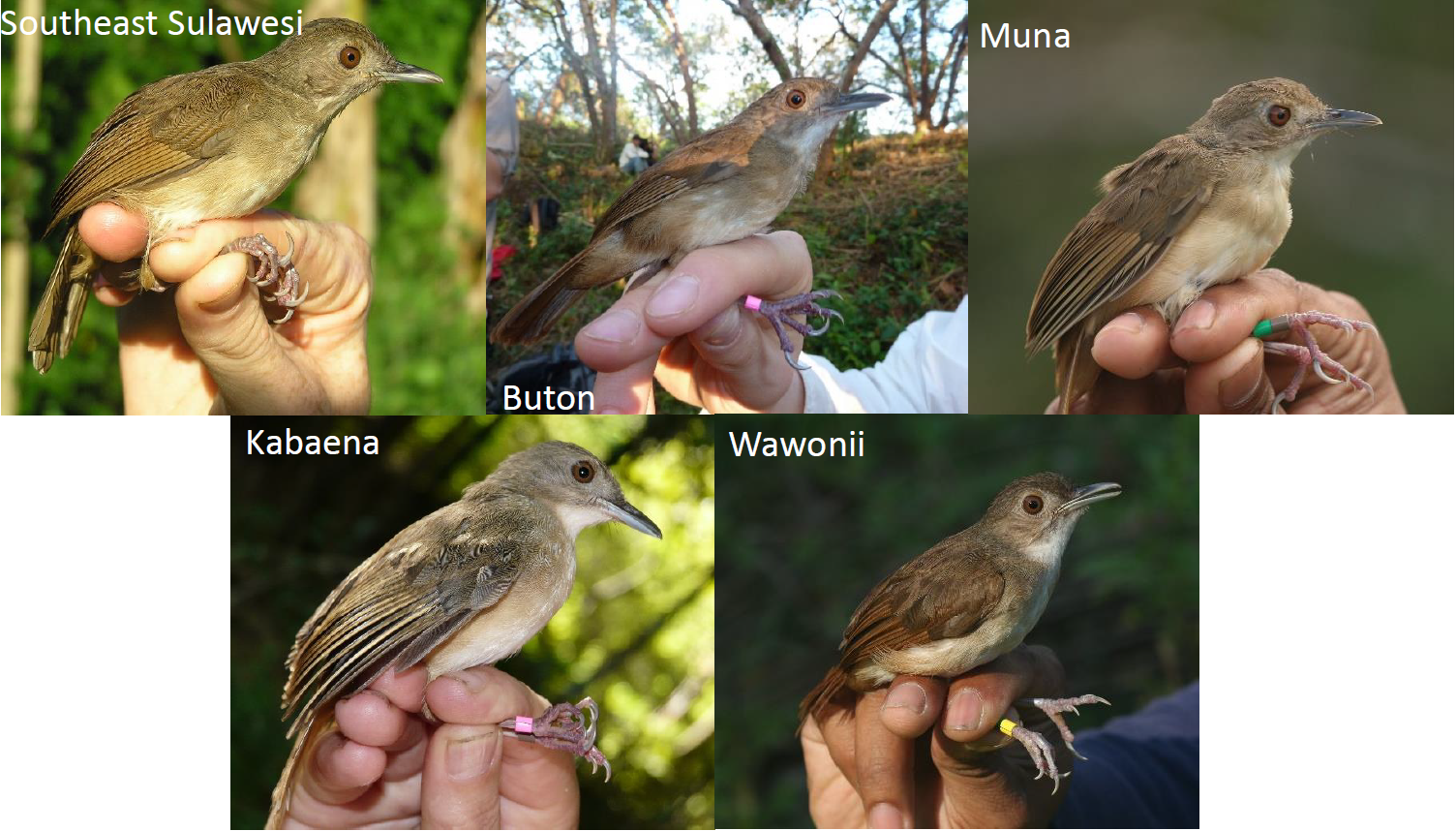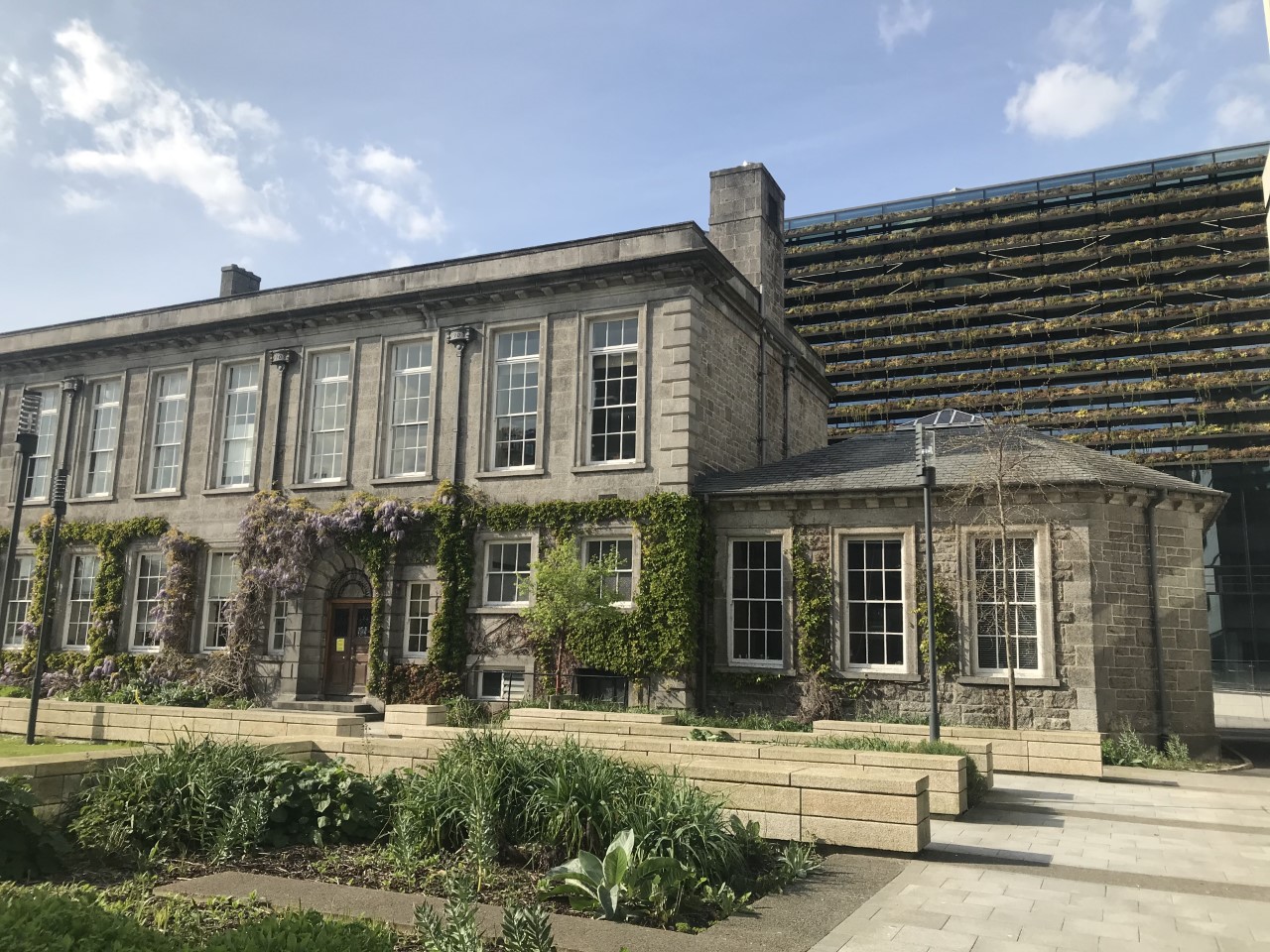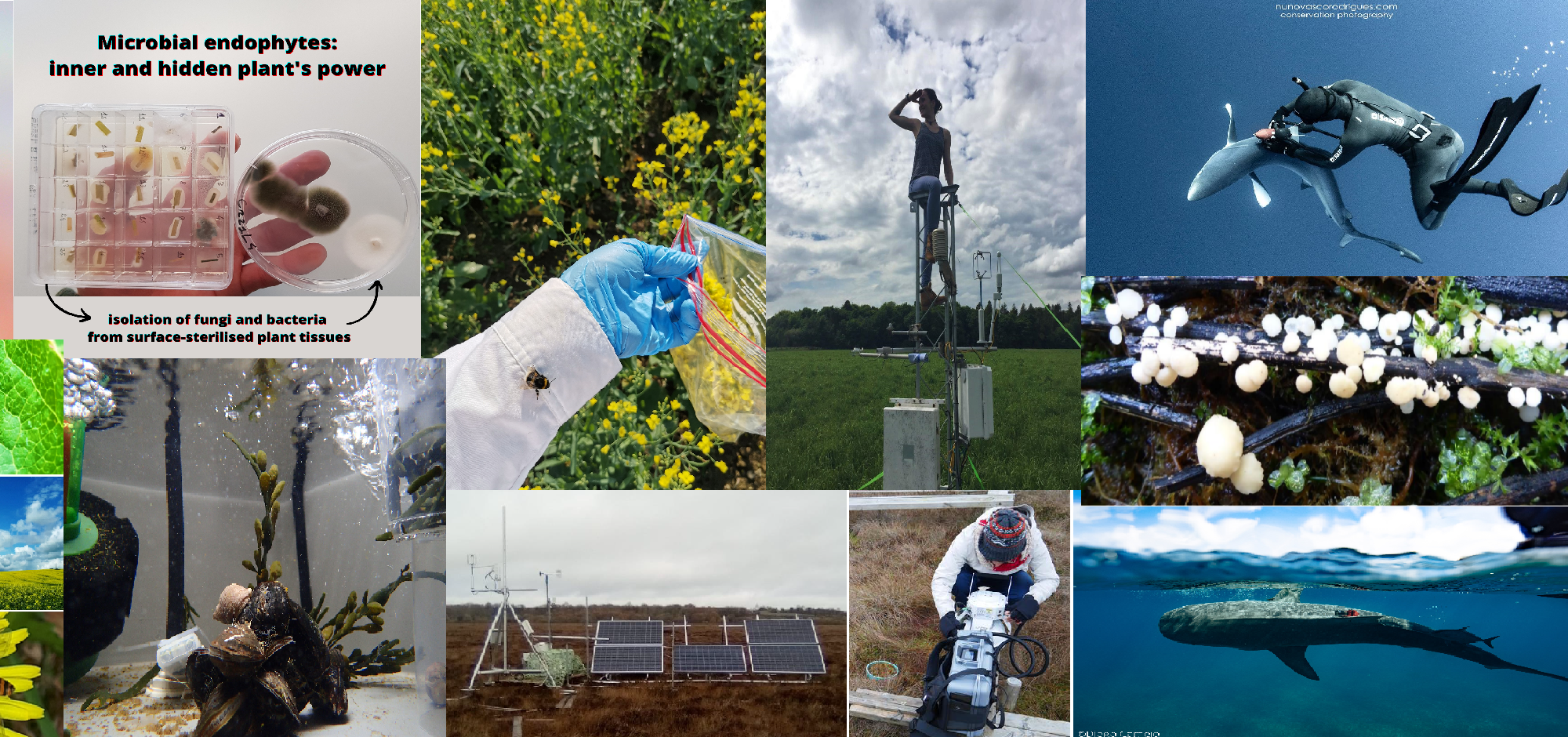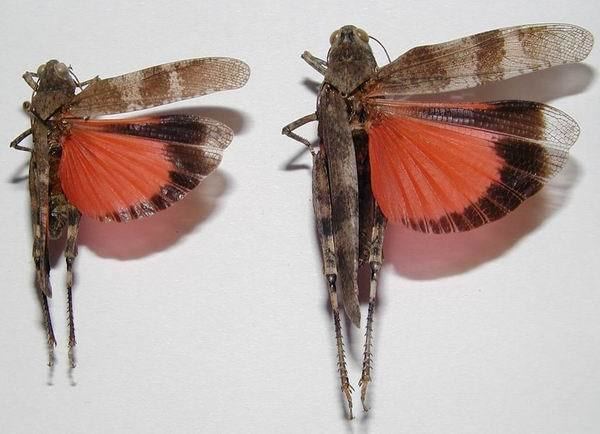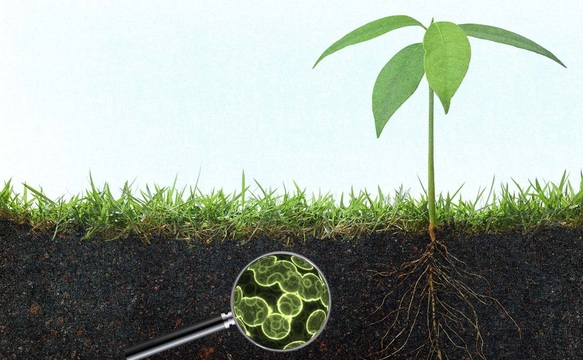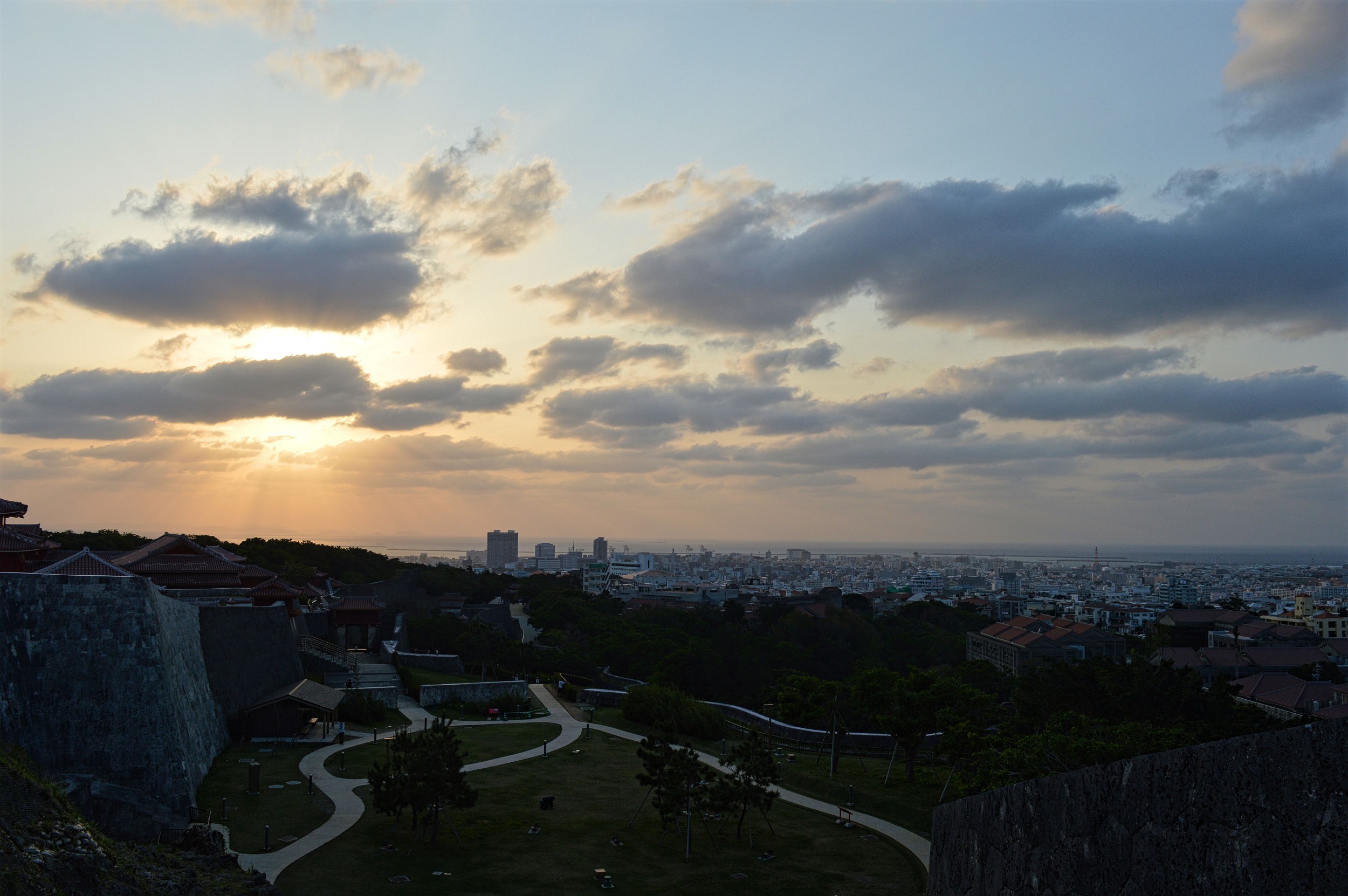What is the first image that comes to mind when you think of evolution? Possibly a line of cartoon primates marching, slouching monkeys at one end and naked men with spears at the other. Or a branching tree diagram where each twig represents an organism, maybe with a tentative “I think” scribbled above it. Alternatively, you may have pictured an illustration of related birds from isolated islands, each showing a dramatically different bill shape adapted to a different diet. Darwin’s Galápagos finches represent a foundational influence in terms of where we tend to look for signs of evolution and what we expect these signs to look like. Our new paper, just published Open Access in Zoologischer Anzeiger: A Journal of Comparative Zoology, provides a contrasting image. We looked at the Sulawesi babbler (Pellorneum celebense), a dull brown bird that spends its time hiding in bushes on less isolated islands in Indonesia, looking pretty similar from one island to the next. Nevertheless, we found that several of its populations are quite different from one another in mitochondrial DNA, in morphology, and in song.
Continue reading “Evolution in the understorey”Herbarium in Trinity College Dublin
A herbarium contains collections of dried, pressed and therefore preserved plant material. Herbaria are amassed primarily for the purposes of understanding plant evolution, biogeography and systematics but are also useful in very many other domains including, for example, pharmaceutics, climate change, ecology and conservation.
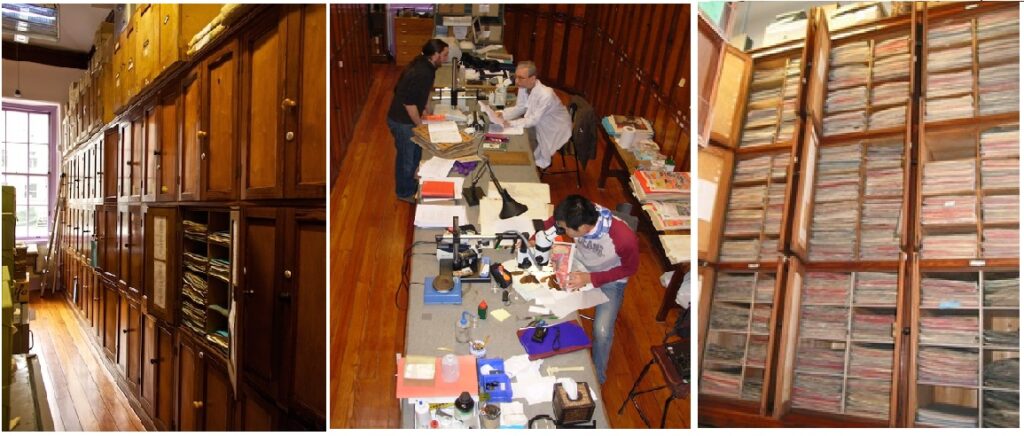
Whilst the TCD herbarium is internationally renowned it is perhaps not as well know as it should be inside the walls of TCD.
Continue reading “Herbarium in Trinity College Dublin”Picture your science
Today we are celebrating our science using pictures! Here below, you can find a collection of pictures from our PhD student and research staff from Trinity College Dublin who kindly participated in this initiative.
Continue reading “Picture your science”A Beginner’s Guide to Dietary Conservatism
Talking about your research interests can be stressful. After all, you’ve spent ages poring through the literature, devising experiments, developing a thesis, justifying your ideas for grants and in publications – trying to condense that into something appropriate for casual conversation (often with a well-meaning relative asking “what are you studying?”, shortly followed by “oh, what’s that?”) is a dangerous rabbit hole. It’s even more perilous when your research interest is something that’s virtually unknown even among other researchers in the field. Trying to explain something that niche to an audience can very quickly make you look quite mad. My research is on dietary conservatism. Hands up who’s heard of dietary conservatism?
Continue reading “A Beginner’s Guide to Dietary Conservatism”The 2020 EcoEvo Hall of Fame
At the start of each year we ask the EcoEvo contributors to share their favourite scientific publications from the past year and why they found them interesting, inspiring, or otherwise worthy of inclusion in the Hall of Fame. Keeping with tradition, here are the EcoEvo Hall of Fame entries for 2020! And if you enjoy reading about our favourite papers from 2020, remember you can also check out our favourites from 2017, 2018 and 2019, too!

Chosen by Andrew Neill
Read the full People and Nature paper here.
I really enjoyed this paper because it tackles a really difficult topic at the intersection of poverty, human rights, development, conservation, and sustainability. It is important to remember that conservation will never meet its objectives without considering how people depend on nature for their needs and livelihoods. The areas of richest biological diversity (and therefore conservation potential) are usually in developing countries with communities experiencing poverty. This paper collects responses from conservation practitioners to examine their viewpoints on poverty in the context of their work.
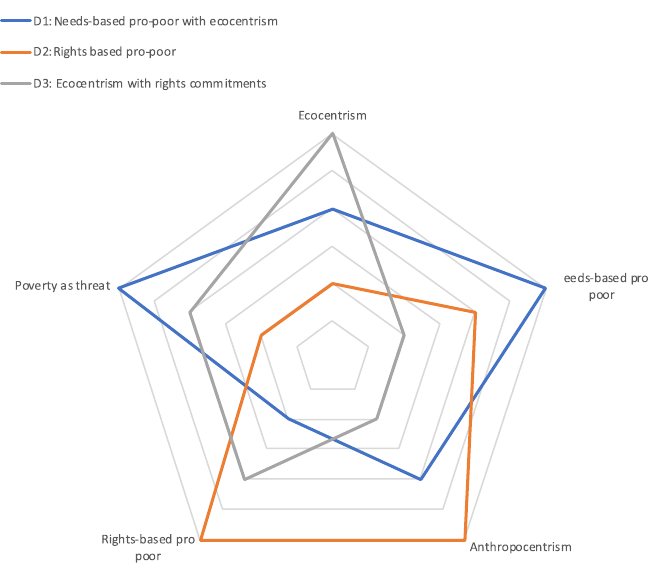
© 2020 The Authors. People and Nature published by John Wiley & Sons Ltd on behalf of British Ecological Society. The article is distributed under the terms of the CC-BY 4 license.
They found some areas of agreement such as the poorest people should not be expected to shoulder the costs of preserving a global public good (the conservation of biodiversity). However, they also identify differences between responses: Is the focus placed on meeting the needs of people or more closely aligned with the “do no harm” principle? Is poverty a driver of nature’s decline, or is it the over-consumption that drives environmental degradation? This paper was a great opportunity to question my own views on these very complex ideas and to appreciate the wide diversity of thought going on across the world of conservation.
Fisher, J.A., Dhungana, H., Duffy, J., He, J., Inturias, M., Lehmann, I., Martin, A., Mwayafu, D.M., Rodríguez, I. and Schneider, H. (2020). Conservationists’ perspectives on poverty: An empirical study. People and Nature, 2 (3), pp.678-692.
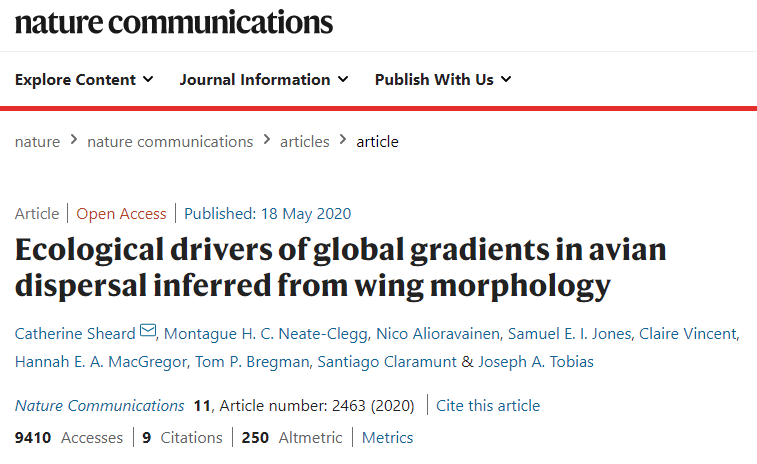
Chosen by Fionn Ó Marcaigh
Read the full Nature Communications paper here.
This paper is based on a truly colossal undertaking: to collect their data on dispersal ability, Sheard et al. measured the wings of 10,338 bird species, i.e. 99% of all bird species on Earth. They used the Hand-Wing Index, a measure that correlates with aspect ratio and basically tells you how long and pointed the bird’s wing is. The higher this number (i.e. the pointier the wing), the better the bird will be at dispersing and flying long distances.
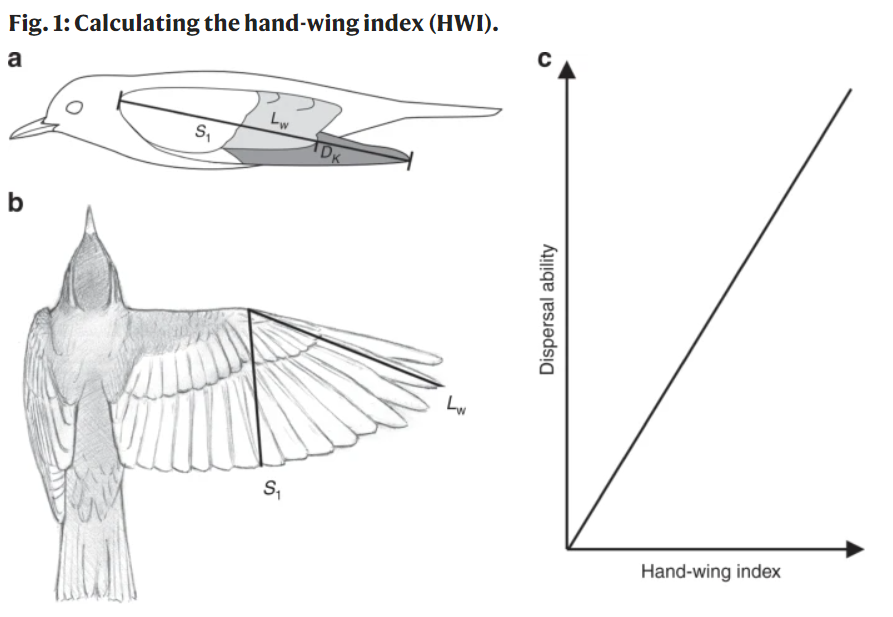
© The Author(s) 2020. This article is distributed under the terms of the CC BY 4 license.
This is important for evolution, as the more birds that are able to fly between distant populations the more gene flow there will be and the less likely the populations are to diverge. Sheard et al. found important links between dispersal ability and geography and ecology, as tropical and territorial birds, had lower Hand-Wing Indices and migratory species had higher ones. It’s fascinating to see how these traits affect the ability of a species to move around, which in turn dictates where that species will be found in the world. The authors have made this incredible dataset freely available and it is sure to inform new insights into bird ecology and evolution for years to come.
Sheard C., Neate-Clegg M. H. C., Alioravainen N., Jones S. E. I., Vincent C., MacGregor H. E. A., Bregman T. P., Claramunt S. & Tobias J. A. (2020) Ecological drivers of global gradients in avian dispersal inferred from wing morphology. Nature Communications, 11 (2463).
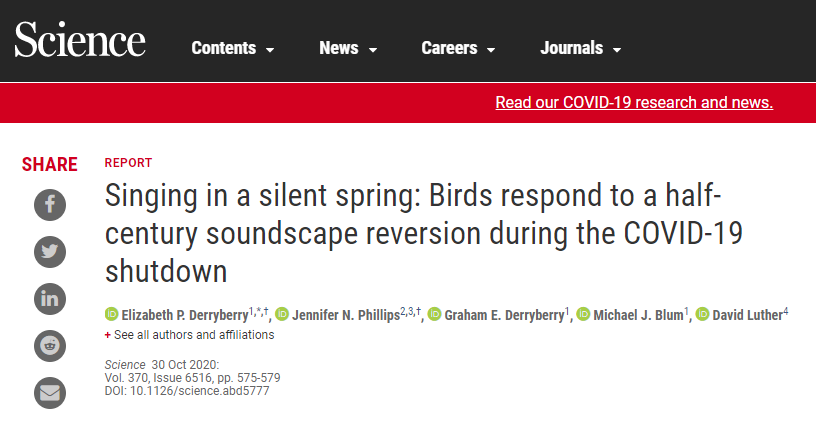
Chosen by Sam Ross
Read the full Science paper here.
The COVID-19 pandemic has been extremely challenging for many, so it was great to see some excellent science coming from the ‘natural experiment’ offered by COVID-19 movement restrictions. The authors show that during the COVID-19 restrictions anthropogenic noise (from vehicles etc.) in the San Francisco Bay Area reached a 70-year low, characteristic of the mid-1950s. They use a long-term dataset of White-Crowned Sparrow recordings to show that during the COVID-19 lockdown, when human noise pollution was minimal, Sparrows exploited the emptied acoustic space (usually occupied by human-related noise) by producing higher-performance songs at lower amplitudes, to maximise song distance. The authors highlight the rapidity with which behavioural traits (song characteristics) adapted to changes in human activity, suggesting incredible plasticity and potential resilience to pervasive anthropogenic pressures like noise pollution. To me, this study is a perfect example of nature’s resilience, and also on finding opportunity from tragedy (research made possible by a global pandemic).
Derryberry E.P., Phillips J.N., Derryberry G.E., Blum M.J., Luther D. (2020). Singing in a silent spring: Birds respond to a half-century soundscape reversion during the COVID-19 shutdown. Science, 370, 575-579.
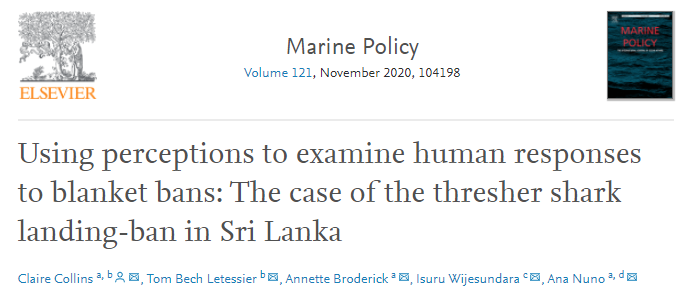
Chosen by Jenny Bortoluzzi
Read the full Marine Policy paper here.
This paper looked at the human behavioural responses to a blanket ban on thresher shark fisheries in Sri Lanka and fisher’s perceptions of different aspects of the ban. A blanket ban means a complete prohibition on exploitation of a species, and Thresher sharks are considered to be the most vulnerable species of pelagic sharks. A blanket ban might therefore seem like a straightforward and easy conservation measure to protect them. But this study looked at the human impact behind such a drastic policy decision. A ban like this has consequences for the livelihoods of fishers – particularly smaller fishermen who rely highly on thresher shark landings to provide for their families. The study clearly shows the disparity in the impact this conservation policy has had between fishers who rely on these catches to survive and those for whom they are not the primary catch.
The biggest message I took from this paper is how important it is that human lives are taken into account when making conservation decisions; and more importantly that scientists and policymakers need to involve communities early on in the process, communicate better and work together, not against each other if we want conservation to be effective – and supported. This is a message I think more scientists need to hear and integrate into their work and one I hope to take forward in my future career.
Collins C., Letessier T. B., Broderick A., Wijesundara I., Nuno A. (2020). Using perceptions to examine human responses to blanket bans: The case of the thresher shark landing-ban in Sri Lanka. Marine Policy, 121 (104198).
How Being Obvious Can Make You Discrete
Camouflage is all about staying hidden. Hiding is useful for animals because they’re less likely to get eaten – or are better able to sneak up on prey! So why do some animals display “flash behaviour”, making them temporarily more obvious and undermining their camouflage?
Continue reading “How Being Obvious Can Make You Discrete”Endophytes for Heavy Metal Bioremediation
Human activity has affected every part of the biosphere – the soil is no exception. Agricultural and industrial practices have deteriorated soil health, impacting ecosystem function as well as food security. For the past two years, I have been working with the e-Seed Start-up to develop an innovative technique called endophytic inoculation, which uses naturally occurring endophytes (microorganisms that live in plant tissues) to improve plants’ resistance to stresses. Endophytic inoculation has a broad range of application, from maintaining and stimulating soil health to improving crop production and reducing the need for pesticides. In our most recent paper, we explored the possibility of using endophytes to enhance plants’ resistance to heavy metal-contaminated soil, paving the way for using endophytic inoculation to help detoxify soils polluted with heavy metals.
Cover image credit: http://modernfarmer.com/2014/04/microbes-will-feed-world-real-farmers-grow-soil-crops/
Continue reading “Endophytes for Heavy Metal Bioremediation”Separating signal from noise in acoustic biodiversity surveys
We can now use acoustic recording equipment to monitor all the sounds produced in an ecosystem. By recording and listening back to sound in this way, we hope to capture useful information about nature. One way to do this is using ‘acoustic indices’, mathematical summaries of the acoustic information contained in audio recordings. But how reliably do such indices actually reflect the biodiversity many of us are trying to monitor and understand?
Continue reading “Separating signal from noise in acoustic biodiversity surveys”Endophytes for Sustainable Agriculture
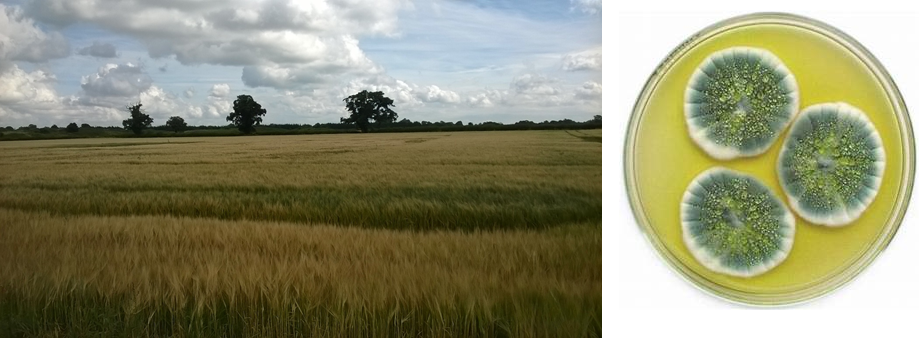
Food security is crucial to society. Today, the challenge is not just producing enough food globally (and distributing it), but to produce it sustainably and ensure long-term food security for society. Our work in the Trinity Botany Department (in collaboration with UCD) is all about developing more sustainable agricultural practices using endophytes.
An introduction in the secret world of the endophytes and their application in agriculture

Endophytes are a class of plant-associated microorganisms that have shown particular promise in agriculture. Endophytes (bacteria, fungi and unicellular eukaryotes) live at least part of their life cycle inter- or intracellularly inside plants, usually without inducing pathogenic symptoms. Endophytes can have several effects on plants and may change function during their life-cycle. Many bacterial and fungal endophytes are known to enhance abiotic and biotic plant stress tolerance and show real promise as crop inoculants.
We have been working with endophytes for over eight years and continue to discover new aspects of their relationships with plants. We focus mainly on barley as this is the largest crop in Ireland, but we have also investigated endophyte relationships with other crops such as strawberry, lettuce, wheat, oat, tomato, and forage grasses. Our research has revealed several beneficial aspects of endophytes that have potential to improve agricultural sustainability: we have discovered endophyte that can help to reduce chemical inputs to crops (i.e. reduce the need for pesticides), enhance crop yields, and even contribute to pathogen resistance! [1–4]
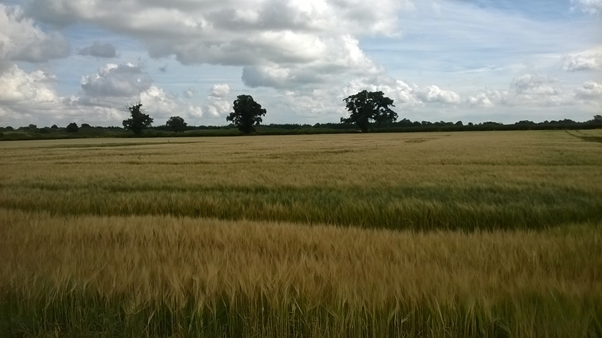
Making Research a Reality
Results from our research have been very encouraging and we have published extensively on the topic. However, we are also keen to see the fruits of our work (so to speak) in action. Funding for our research has come from Science Foundation Ireland and Enterprise Ireland, and this has resulted in two patent filings (through TCD and UCD) related to our discoveries. We are now in the process of commercialising our endophyte technology with the support of Enterprise Ireland, who have fast-tracked us into their High-Performance Start-Up (HPSU) programme to develop a technology to make agriculture more sustainable and profitable. We have also recently partnered with UCD, NUIG, and Teagasc in a new multi-disciplinary research programme, funded by DAFM, which will continue our discovery pipeline for beneficial endophytes for barley.
Current and planned restrictions on chemical crop inputs mean that alternative methods of crop treatment are needed and this will present difficulties for farmers. We believe that the bio-based technology we have developed will form part of the solution. Agriculture is facing many problems due to unsustainable practices and the effects of global warming, but we think that restoring the natural endophyte partners to agricultural crops will enable a more sustainable future for farming.
Continue reading “Endophytes for Sustainable Agriculture”Nature and Wellbeing
A Long Read by Cian White

For anyone living in a city during a pandemic, the benefit of parks to your physical and mental health is obvious. There is space to properly social distance, space to meet up with friends, space to exercise or kick a ball around, benches to sit on, air to breathe, life to live. Then there is the life in the parks, the trees and shrubs and birds and insects, all the stuff that comes under the vague heading of greenspace or nature. So, to celebrate World Cities day and in the interest of public health, let us explore a very interesting area of research developing at the intersection of ecology and psychology: meaningful nature experiences.
Continue reading “Nature and Wellbeing”
